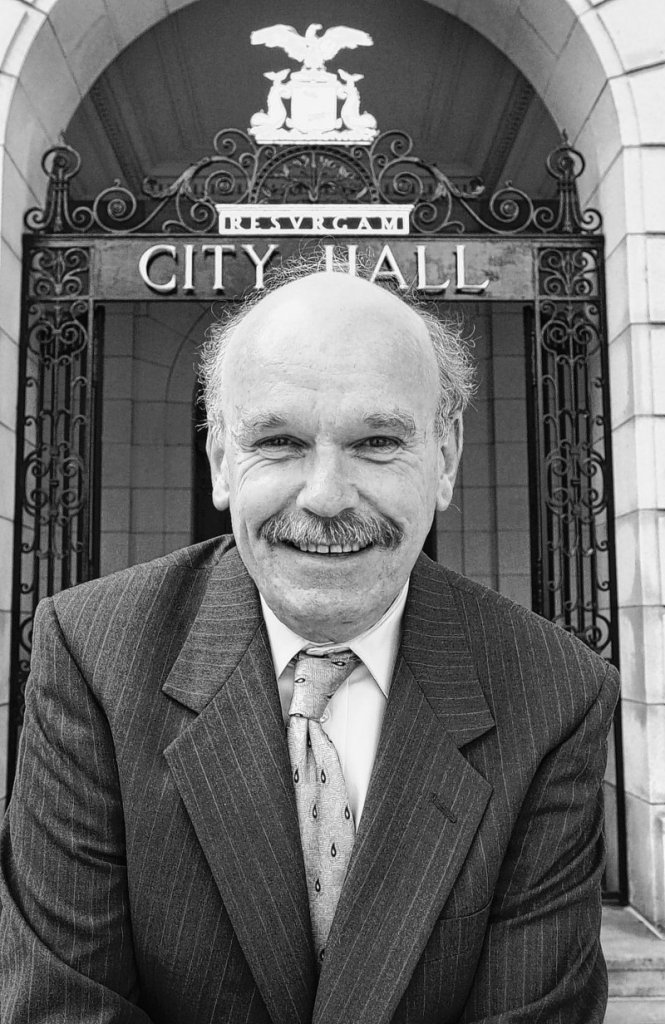When you follow the news every day, everything looks like a crisis.
Sometimes you have to take a step back to realize how well things are going.
Portland City Manager Joe Gray is cleaning out his office this week, and along with some dusty old planning studies, he’s finding that the city that’s been his employer for more than 40 years has made some great progress.
His departure from City Hall at the end of this week should be an occasion for all of us to take a step back and see how far we’ve come.
When Joe Gray first came to town in 1969, Portland was not on any national Top 10 list as a place to visit or live.
Congress Street was a regional business hub with a number of now-long-gone department stores like Porteous, Mitchell & Braun. But you really wouldn’t want to go too far up the street, unless you didn’t mind being solicited by prostitutes.
The Old Port was an old port. Warehouses were the most successful businesses, and many of the storefronts were vacant. It also had a reputation as a high-crime district, one that nice people avoided.
An unused grain elevator and abandoned rail yard dominated the eastern waterfront. Old neighborhoods were run-down, labeled slums, and were slated for destruction.
So what happened? Who had the vision to balance development with preservation, making Portland the desirable place to live and work we see today?
No one. Or not one person, Gray said from his City Hall office Tuesday. There was no master plan, and that might have been the secret.
Starting with the Model Cities program that brought him to the city planning staff in 1970, the city has developed neighborhood groups, which spread the influence held by a handful of business leaders to a broad spectrum of the community.
That maze of 21 neighborhood organizations that can confound developers is part of the reason people want to develop here, Gray said, because the groups have advocated for the quality of their pieces of the city. That’s part of the message Gray plans to deliver to business leaders at the Chamber of Commerce’s Eggs and Issues meeting Thursday, and one that has not been heard very often.
“The level of community engagement in decision-making is very important,” Gray said. “When developments are made, they are made thoughtfully and everyone benefits.”
The suburbanization of America is the big development story of the second half of the 20th century, and Greater Portland has certainly witnessed explosive growth in what were once sleepy country towns while city population declined. But at least a small sidebar should be devoted to the comeback in recent decades of historic city centers like New York, Boston and Providence.
Portland has not seen the explosive growth in wealth that those cities have, but what’s happened here is still remarkable. Maybe even more so.
The downtown has survived losing large retail businesses to the Maine Mall by developing a thriving Old Port and arts district with a wide selection of restaurants, night life and niche shops.
But that growth hasn’t come at the expense of the old neighborhoods, which have been the focus of steady investment over the decades. Most of that came from private sources – homeowners maintaining and improving their property – but a lot was helped by the city.
Investments in city parks, brick sidewalks and other nice touches raised the confidence of potential buyers. The city’s homeownership assistance program and home improvement funds also kept neighborhoods from decaying.
“Portland has held its own due to a lot of investment in our neighborhoods,” Gray said.
“We have not seen the abandonment and disinvestment that we have seen in other cities, where people just move out, nobody moves in and the infrastructure deteriorates. Yeah, we’ve got some issues in our neighborhoods, but we’ve still been able to invest in them consistently, and that’s made big difference.”
Portland has some major challenges ahead.
Its reliance on property tax has made it impossible to maintain services over the last three years when new development halted.
And while traditional businesses are cutting jobs all over the state, it remains to be seen if the emerging high-tech businesses in Portland and other places will pick up much of the slack.
What happens next will be determined by how well Portland, with a new city manager and a new elected-mayor form of government, will be able to work with residents and the business community to move forward.
And, unlike the last 40 years, Gray will be watching from the sidelines. There may have been no master plan that brought the city to where it is today, but there were a lot of decisions made along the way, and for many of them, Gray was part of the conversation.
That makes this a time for us all to take a step back, and say thanks.
Greg Kesich is an editorial writer. He can be contacted at 791-6481 or at: gkesich@pressherald.com
Send questions/comments to the editors.




Success. Please wait for the page to reload. If the page does not reload within 5 seconds, please refresh the page.
Enter your email and password to access comments.
Hi, to comment on stories you must . This profile is in addition to your subscription and website login.
Already have a commenting profile? .
Invalid username/password.
Please check your email to confirm and complete your registration.
Only subscribers are eligible to post comments. Please subscribe or login first for digital access. Here’s why.
Use the form below to reset your password. When you've submitted your account email, we will send an email with a reset code.